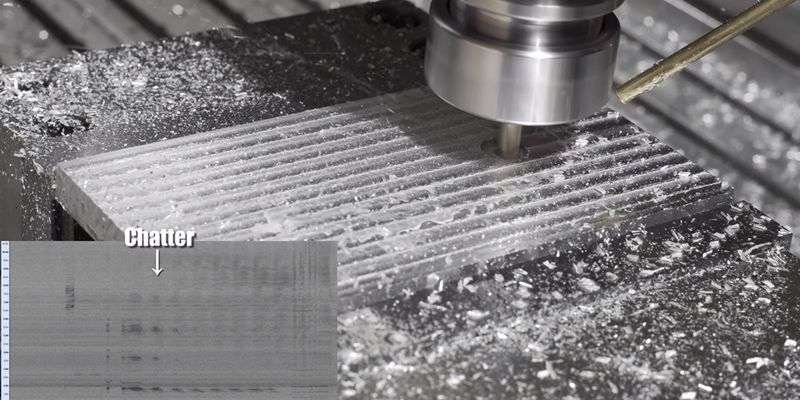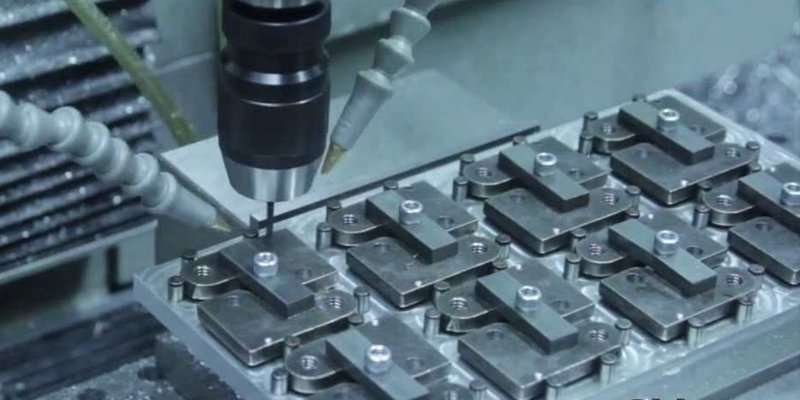Precision is the cornerstone of CNC machining, and within this realm, CNC machining tolerance takes center stage. Tolerance dictates the allowable variations in dimensions, ensuring that manufactured components meet exact specifications. In this article, we will discuss the role of tolerance in CNC machining, and different types of CNC tolerances.
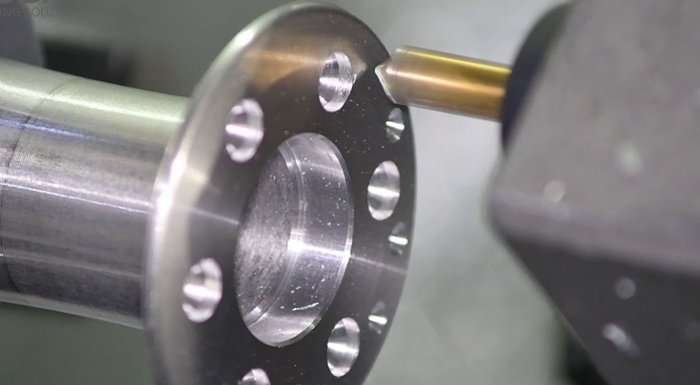
Table of Contents
ToggleDefinition of CNC Machining Tolerances
CNC machining tolerances, crucial in precision engineering, define boundaries for part dimensions. Engineers encounter CNC tolerances daily, ensuring parts fit perfectly. CNC tolerances, usually ±0.005″, dictate accuracy. Not mere numbers, they embody precision’s essence in CNC machining.
Tolerances, in CNC, transform abstract designs into tangible, functional components. Understanding these limits is key to CNC mastery. Precision, defined through CNC tolerances, reflects an engineer’s skill. In CNC machining, tolerances aren’t just guidelines; they’re the line between success and rework.
The Role of Tolerances in CNC Machining
- Dimensional Accuracy: CNC tolerances, crucial for dimension precision, determine parts’ exactitude. ±0.005″ is typical in machining tolerances.
- Fit Quality: Inter-part synergy hinges on stringent CNC tolerances, ensuring snug, precise fits. A deviation of 0.010″ could disrupt assemblies.
- Surface Finish: Surface quality is a direct CNC tolerance offspring, that impacts aesthetics and functionality. Typically, ±0.003″ tolerance ensures smooth surfaces.
- Assembly Integration: Integrating parts seamlessly demands CNC precision. Tolerances as tight as ±0.002″ facilitate flawless integration.
- Functional Reliability: Reliability in function stems from CNC machining tolerances. It governs parts’ lifespan and efficiency. Typically, tolerances range around ±0.005″.
- Production Consistency: Uniformity in mass production relies on replicable CNC tolerances. Consistent ±0.004″ tolerances ensure part-to-part uniformity.
- Cost Efficiency: Balancing tolerances with cost, CNC techniques optimize resources. Tighter tolerances, while costly, enhance quality.
- Performance Criteria: Achieving performance goals requires precision CNC tolerances. Essential for high-stress applications, where ±0.003″ tolerance is common.
- Material Compatibility: Different materials adapt to CNC tolerances uniquely. Material properties often dictate a tolerance range, typically ±0.005″.
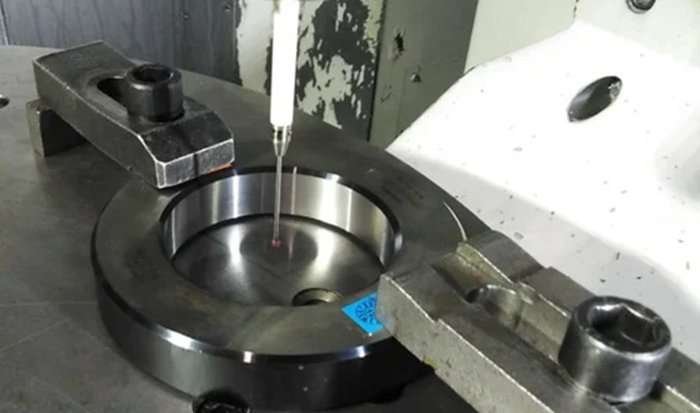
Types of Tolerances in CNC Machining
There are different CNC tolerances in machining, let’s check.
Dimensional Tolerances
In CNC’s industry, dimensions reign, precise to 0.010mm. Each cut is a testament to accuracy’s pursuit. Engineers’ dreams materialize in metal and plastic, shaped under digital guidance.
Tolerances, not mere numbers, but precision’s very soul. Here, 0.005mm isn’t just a measure, it’s an achievement.
Geometric Tolerances
For typical CNC tolerances, where shapes obey strict rules. Standard CNC tolerances sculpt perfection, not just in dimensions, but in form.
Imagine a world where a circle is always truly round, a square’s angles ever perfect. This isn’t fantasy; it’s geometric tolerance in CNC artistry.
Surface Finish Tolerances
Surface finish is vital yet often overlooked. CNC’s dance of tools leaves behind more than shapes; it crafts textures. From mirror-like smoothness to strategic roughness, each surface tells a story. In this narrative, every micron counts, crafting finishes that aren’t just seen, but felt.
Table on Types of Tolerances in CNC Machining
| Criteria | Dimensional Tolerances | Geometric Tolerances | Surface Finish Tolerances |
| Definition | Precision in measurements | Consistency in shapes | Quality of surface texture |
| Typical Units | Millimeters or inches | Degrees, millimeters | Ra (Roughness Average) |
| Measurement Tools | Calipers, Micrometers | GDT (Geometric Dimensioning) | Surface roughness testers |
| Controlled Features | Length, Diameter, Thickness | Flatness, Symmetry, Profile | Roughness, Waviness, Lay |
| Common Standards | ISO 2768, DIN 7168 | ASME Y14.5 | ISO 1302, ASME B46.1 |
| Application Examples | Machine parts dimensions | Aerospace component fitting | Automotive exterior parts |
| Tolerance Range (Typical) | ±0.005 – ±0.1 mm | ±0.005 – ±0.05 mm | 0.1 – 50 µm (Ra) |

What Factors Influence CNC Machining Tolerances?
Material Properties
In CNC milling, materials dictate tolerances. Hard metals resist deformation; softer ones flex more. Alloys like Ti-6Al-4V demand precision; their characteristics directly affect CNC machining tolerances. Temperature response of materials also plays a crucial role. A machining tolerances chart reveals varied tolerances for different materials.
Tool Precision
Precise tools equal precise parts. Tooling accuracy impacts the final CNC machining tolerances. High-grade tools maintain sharpness longer, ensuring consistent dimensions.
Tool geometry also influences outcomes, as seen in CNC milling tolerances. Regular tool inspection is vital for maintaining precision.
Machine Calibration
Calibration is key. Accurate machine settings ensure adherence to specified tolerances. Regular calibration checks are mandatory for consistent quality.
Even minute deviations in calibration can significantly alter machining tolerances. This highlights the importance of maintaining machine health.
Operator Skill
Skilled operators make a difference. Experience and expertise contribute to maintaining tight tolerances. An operator’s understanding of materials and tools enhances precision. They adjust parameters effectively, optimizing CNC machining tolerances.
Temperature Fluctuations
Temperature affects metal expansion and contraction. Stable workshop temperatures ensure consistent CNC machining tolerances. Sudden temperature changes can cause material warping, affecting tolerances. Temperature-controlled environments are essential for high-precision work.
Cutting Speed
Speed impacts finish and accuracy. Optimal cutting speeds reduce tool wear, maintaining tolerances. Too fast speeds cause overheating and deformation. Adjusting speeds appropriately is crucial for achieving desired CNC machining tolerances.
Feed Rate
Feed rate influences surface finish and tool life. Correct feed rates prevent tool deflection and material burn. Balancing speed and feed is essential for maintaining tolerances. Consistency in feed rate ensures uniformity in CNC machining tolerances.
Vibration Control
Vibration impacts precision. Effective vibration control enhances machining accuracy. Anti-vibration measures are essential in maintaining tolerances. Machine stability is a critical factor in achieving desired CNC machining tolerances.
Clamping Force
Adequate clamping force ensures workpiece stability. Excessive force can deform the material. Balancing clamping force is crucial for maintaining CNC machining tolerances. Proper clamping techniques are also essential for precision work.
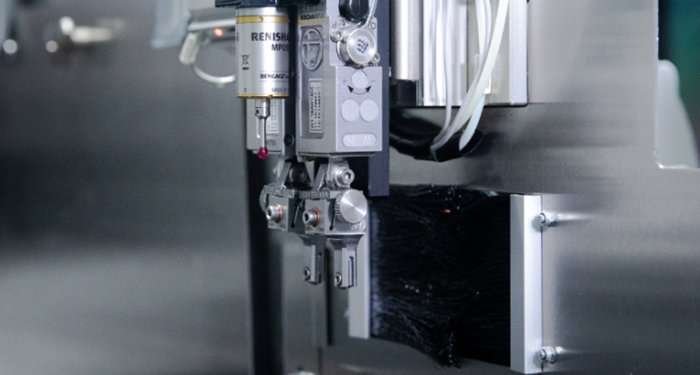
How to Measure CNC Tolerances?
Selecting Measurement Instruments
Precision is paramount; choose tools like CMMs (Coordinate Measuring Machines) and laser scanners. Their accuracy, typically within ±0.005 mm, underpins reliable tolerance assessment.
Zero-tolerance machining demands this meticulous approach. Tools must align with the complexity and scale of the machined parts.
Preparing the CNC Machine
Calibration is vital. Regularly check CNC machines to ensure optimal performance. Maintenance schedules prevent deviations in tight tolerance machining.
This step includes verifying spindle alignment, tool calibration, and ensuring a temperature-controlled environment.
Implementing a Standardized Process
Adopt ISO standards or similar. Uniformity in processes guarantees consistent tolerance measurements. It involves standardized programming, material handling, and machine operation protocols. Documentation here is key, as it maintains a reference point for future measurements.
Material Consideration
Different materials behave uniquely under machining. Factors like thermal expansion and material hardness impact tolerance levels. Aluminum, for instance, expands more compared to steel. Account for these variations to maintain precision in final measurements.
Conducting Repeated Measurements
Consistency is crucial. Multiple measurements reduce error margins. Each part undergoes several checks to confirm adherence to specified tolerances. Data collection at this stage is vital, feeding into continuous improvement cycles.
Analyzing Data for Quality Control
Utilize statistical analysis tools. These methods, like SPC (Statistical Process Control), identify trends and anomalies in tolerance measurements. They provide insights for adjustments in machining processes, ensuring higher precision in subsequent runs.
How to Achieve High Precision Tolerance in CNC Machining?
Advanced Tooling
Precision tools, with diameters <0.01 inches, are not uncommon. This allows for intricate patterns. Advanced tooling is key for maintaining high precision tolerance.
Alloys used in tool fabrication contribute to durability, impacting overall tolerance examples. Tool geometry, coatings, and substrate materials influence outcomes.
Refined Processes
CNC machining thrives on refined processes. Each step, minutely planned, enhances the end product. Tight tolerances require systematic approaches.
Steps involve precise movements, controlled feeds, and speeds. Refined processes ensure repeatability, crucial for high precision tolerance. Skilled operators play a vital role here.
Temperature Control
Temperature fluctuations impact material behavior. CNC environments maintain strict temperature control. Metals expand or contract with temperature changes.
This can affect tolerances drastically. Temperature-controlled environments counter these effects. Consistent ambient conditions are critical for achieving desired results.
Precision Materials
Certain alloys offer superior machinability. Precision materials reduce tool wear. This leads to better tolerance control. High-grade materials contribute to consistent machining quality. They ensure reliability in stringent tolerance examples.
Enhanced Calibration
Calibration is paramount in CNC machining. Machines undergo frequent recalibration. This maintains accuracy. Enhanced calibration techniques involve laser systems and advanced software. These tools ensure machines operate within the tightest tolerances. Regular calibration checks are essential.
Micro-Machining
Micro-machining tackles tasks on a minuscule scale. Parts with features in the micrometer range are common. This requires specialized equipment. Precision is paramount here.
Techniques in micro-machining push the boundaries of what’s possible in high precision tolerance.
High-Speed Techniques
High-speed machining offers efficiency and precision. It involves rapid tool movements and high spindle speeds. This reduces machining time. It also minimizes thermal distortion. These techniques are vital for maintaining tight tolerances. They’re especially useful in large-scale production.
CNC Machining Tolerances in Different Industries
Aerospace Requirements
In aerospace, standard CNC tolerances soar like an F-22, precision ruling the skies. Components must fit with a 0.005mm margin; any less, risks escalate. It’s about tight fits, not “close enough”.
Here, a 0.01mm deviation isn’t just a number, it’s a potential catastrophe. Engineers’ mantra: measure thrice, cut once.
Medical Precision
Medical precision demands a surgeon’s touch, and CNC milling tolerances reflect this. At 0.010mm, these are not mere specs, but lifelines. Implant components, with their 0.003mm variances, tolerate no error. In this realm, each micrometer counts, shaping health outcomes. Precision isn’t just a goal, it’s a necessity.
Automotive Standards
Automotive standards revolve around durability and performance. Here, standard CNC tolerances are the unsung heroes, at a 0.025mm threshold.
Chassis parts to engine components, each adheres to this creed. A 0.020mm discrepancy can mean the difference between a smooth ride and a recall. Precision drives this industry, literally.
Electronic Components
In the world of electronic components, size matters inversely. CNC milling tolerances shrink to near-invisible 0.015mm, where details are kings.
Circuit boards and connectors defy the naked eye, demanding microscopic precision. Here, a millimeter is a giant; a micron, is the norm. This industry’s mantra: smaller, yet mightier.
Industrial Machinery
Industrial machinery, the behemoths of production, relies on a different scale. Standard CNC tolerances here stand at a robust 0.050mm. Gears and levers, though large, demand precise interactions. A 0.045mm mismatch can halt an entire assembly line. In this world, precision is measured in robustness, not just numbers.
How To Optimize CNC Processes for Better Tolerances?
Material Selection’s Crucial Impact
Start by choosing materials apt for high precision tolerance. Different materials behave uniquely under CNC machining stress. Aluminum alloys, for instance, allow for tighter tolerances than plastics. Consult material datasheets for thermal expansion coefficients.
Balancing cost and performance is key in material selection. This step is fundamental for achieving desired tolerances in manufacturing.
Tool Calibration and Maintenance
Regular calibration of CNC tools is essential. Wear and tear affects tool precision over time. Use micrometers and laser systems for calibration checks. Replace worn tools promptly.
A well-maintained tool ensures consistency in machining operations. This reduces errors in final measurements, maintaining dimensional accuracy.
Advanced Programming for Precision
Optimize CNC programming for accuracy. Employ CAM software with enhanced algorithms. Integrate real-time feedback mechanisms. This allows adjustments during the machining process. Utilize simulation tools to anticipate and correct potential errors.
Advanced programming minimizes deviations, ensuring adherence to specified tolerances.
Temperature Control’s Role
Temperature fluctuations impact metal expansion and contraction. Maintain a controlled environment in the machining area. Implement cooling systems for heat-intensive processes.
Monitor ambient temperature regularly. Stable temperature conditions help in maintaining consistent machining quality. This is critical for achieving tight tolerances.
Precision Measuring Instruments
Invest in high-quality measuring tools. Use digital calipers, coordinate measuring machines (CMM), and laser scanners. Regularly calibrate these instruments.
Accurate measurement is crucial for verifying tolerances. This helps in making immediate adjustments if deviations are detected. Precision measuring is a cornerstone of quality control in CNC machining.
Skilled Workforce Training
Skilled operators make a significant difference. Train staff in precision machining techniques. Emphasize the importance of following exact specifications.
Provide workshops on interpreting technical drawings accurately. A well-trained team is adept at managing and troubleshooting CNC processes. Their expertise is invaluable in achieving and maintaining precise tolerances.
Conclusion
Our odyssey through CNC machining tolerances ends, but your journey to precision starts now. We’ve navigated types, factors, measurements, and optimization techniques.
Now, apply this knowledge, and refine your craft. Contact XinCheng for further expertise. Embrace tighter tolerances, and elevate your CNC machining capabilities.

